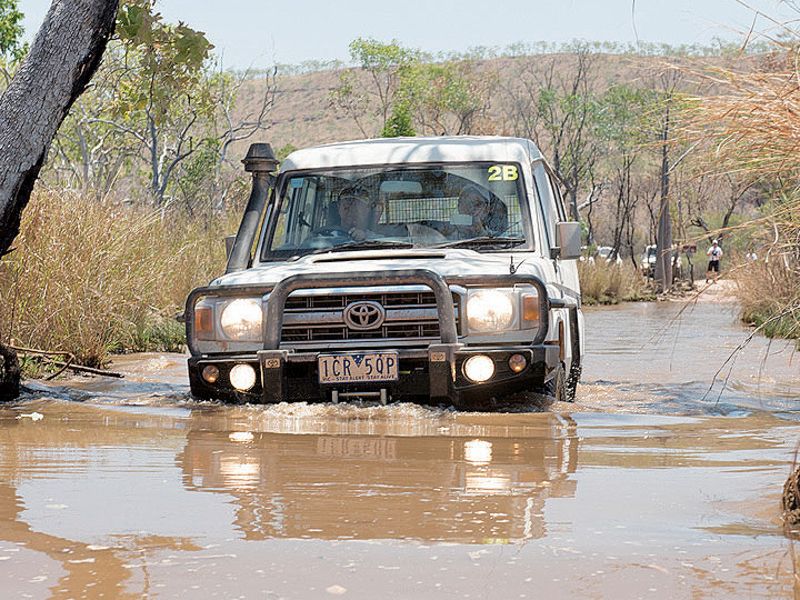
NAGOYA, Japan — If things had gone according to plan, a cavalcade of Toyota vehicles would have rumbled into Tokyo this month, heralding the 2020 Summer Olympics and wrapping up an unprecedented seven-year, five-continent endurance drive by the country’s flagship automaker.
Instead, the COVID-19 pandemic emerged, forcing the cancellation not only of the Summer Games but also of Toyota’s so-called Five Continents Drive in its highly anticipated home stretch.
It was an especially bitter pill for Toyota because, as a top sponsor of the Olympics, this was supposed to be its year to shine on the world stage. Toyota Motor Corp. had a lineup of robots, electric vehicles and other gizmos to showcase, and the conclusion of the global drive would be their drumroll.
“It’s a real pity,” said Hiroshi Yokoyama, group manager of brand management at Toyota’s Gazoo Racing Co., the motorsports unit that oversaw the drive program. “But because of the coronavirus, we had no choice.”
Yet, even as Toyota’s drive came to an inglorious close, Japan’s biggest automaker is busy keeping its spirit alive. Now comes phase two: Compiling lessons learned and parlaying them into building vehicles that better fit the world’s diverse markets and customers.
The 111,500-kilometer (69,000-mile) Five Continents Drive was the brainchild of President Akio Toyoda in an effort to instill his oft-touted “ever-better cars” mentality across the company. According to Toyoda, roads teach the people, and the people make the cars.
“You’ve experienced the road, the cars and the people who use them with your own senses,” he told returnees after the 2017 drive. “Don’t rely solely on data. I want you to take what you felt with your own senses, take the true essence of things, and use it to make ever-better cars.”
The program took hundreds of Japanese employees of Toyota and local affiliates and shipped them around the world to drive each continent’s roads over several years. The adventure kicked off in 2014 with Australia, then moved through North America, Latin America, Europe and Africa. Last year, Toyota drove Asia, from the Middle East to India and Southeast Asia.
In 2020, Toyota targeted China, South Korea, Mongolia and Taiwan before returning to Japan to converge on Tokyo in August for the Olympics and Paralympics. But when COVID-19 struck, that last leg was canceled before it even began.
Despite the early end, the drive racked up some impressive results. Since 2014, more than 700 people participated in the program, driving more than 270 vehicles — from the Land Cruiser and Tundra to the Camry and Corolla.
Team members drove through 55 countries, from the Arctic and sweltering deserts to wind-battered mountain tops, crocodile-infested jungles and gridlocked cities. (Automotive News was embedded for a leg in the Andes Mountains of Argentina.) Team members took notes, photos and videos to chronicle every lesson for colleagues back home.
The drive time inspired numerous improvements:
- Adoption of a new strake for the Corolla for easier cleaning
- Addition of sponges to front corners inside some vehicles to reduce wind noise
- Application of heaters to millimeter-wave radars to keep them from freezing.
But Toyota executives say the real benefits are the intangible ones. Engineers, salespeople, product planners and bean counters from Japan got in tune with the tastes, demands and conditions of co-workers, customers and dealers in the far-flung reaches of Toyota’s empire. The drive improved communication, fostered camaraderie and made one of the world’s biggest automakers just a little bit smaller. Most importantly, it got people out and driving — it got people more sensitive to the cars and customers.
“That was the president’s real desire, to get people to work across boundaries and polish the sensors,” said Harold Archer, a project manager who organized the drive and took a turn behind the wheel on every continent. “But if you don’t love cars and use them, you can’t make them better.”
Toshiyuki Sekiya, a 44-year-old senior expert vehicle tester, spends most of his time evaluating driving dynamics and handling at Toyota’s Higashi-Fuji Proving Ground near Mount Fuji. He used to spend, on average, 15 minutes inside the cars he was testing.
Then he joined the Five Continents Drive program and was thrust behind the wheel for a month on foreign roads, logging up to 700 kilometers (435 miles) a day.
He discovered, for instance, that in Japan, twisting roads with low driving speeds are the norm. But in other countries the rule is long, straight roads with fast traffic flow. And unlike in Japan, where the roads are immaculately manicured and quiet, overseas roads are rougher and generate a lot more cabin noise. His takeaways: Overseas markets put a higher priority on linear driving stability and cockpit quietude than customers in Japan.
Now, Sekiya tweaks his evaluations to account for global conditions.
“The biggest lesson was that I could see the faces of our customers worldwide,” said Sekiya, who drove every continent from 2014 to 2019. “Before, I was just imagining their circumstances. Now, our customers’ faces are visible. You could say there was a change of priority.”
Toyota’s next big challenge will be spreading those lessons across the company.
Veterans like Sekiya will have to teach by example and share their experiences. Yokoyama said there are no plans to organize another Five Continents Drive, at least not on such a grand scale. Toyota hasn’t disclosed the cost, but the outlays were substantial over the years — from flying employees to the far reaches of the world to taking the time away from their regular jobs.
One option could be regional drives organized by local subsidiaries, Yokoyama said.
Another could be truly out of this world: Toyota is setting its sights on what it calls a “sixth continent” — the moon. That ambition rests on Toyota’s plan to send a six-wheeled vehicle it dubs the Lunar Cruiser there in 2029. The wildest ride yet is just beginning.